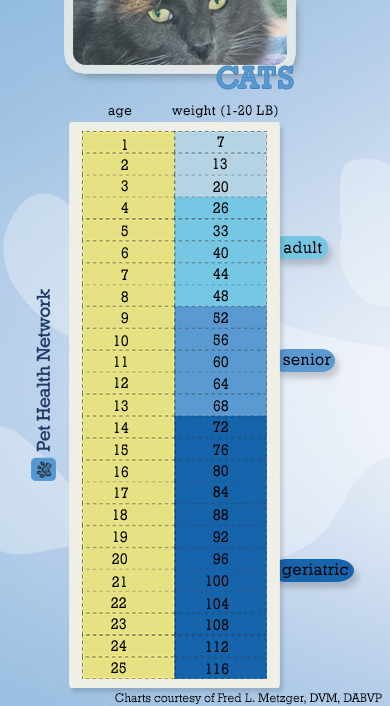Be cautious with home-made diets. From the AVMA Animal Health SmartBrief
Homemade dog food recipes can be risky business, study finds
Jul 24, 2013
When it comes to canine cuisine, home cooking may not be all it's
cracked up to be, reports a team of researchers at the University of
California, Davis, School of Veterinary Medicine.
In what is thought to be the largest ever nutritional
evaluation of recipes for home-prepared dog foods, the researchers found
that very few of 200 recipes analyzed provided all of the essential
nutrients in amounts adequate for meeting established canine health
standards.
Findings from the study appear in the June issue of the
Journal of the American Veterinary Medical Association.
"Some owners prefer to prepare their dogs' food at home because they
feel they have better control over the animals' diet, want to provide a
more natural food or simply don't trust pet food companies," said
Jennifer Larsen, an assistant professor of clinical nutrition at the
William R. Pritchard Veterinary Medical Teaching Hospital at UC Davis
and lead author on the study.
"The results of this study, however, indicate that most available
recipes for healthy dogs, even those published in books by
veterinarians, do not provide essential nutrients in the quantities
required by the dog," Larsen said. "It is extremely difficult for the
average pet owner—or even veterinarians—to come up with balanced recipes
to create appropriate meals that are safe for long-term use," she said.
"Homemade food is a great option for many pets, but we recommend that
owners avoid general recipes from books and the Internet and instead
consult with a board-certified veterinary nutritionist," Larsen said.
"These specialists have advanced training in nutrition to help formulate
customized and nutritionally appropriate recipes."
Larsen, together with Jonathan Stockman, a veterinarian and second-year resident in
clinical nutrition
at UC Davis, selected 200 recipes from 34 different sources, including
veterinary textbooks, pet care books and web sites. They evaluated both
the ingredients and the instructions for each recipe, using a
computer-based program to quantify the nutritional content of the food
described by each recipe, as well as the specificity of the
instructions.
They found that only nine of the 200 recipes —including eight of the
nine written by veterinarians—provided all essential nutrients in
concentrations that met the minimum standards established for adult dogs
by the Association of American Feed Control Officials, while only five
recipes—all written by veterinarians—provided
essential nutrients in concentrations that met the National Research Council's Minimum Requirements for adult dogs.
Although recipes written by veterinarians were less likely to have
any nutrient deficiencies—and those being less severe—most still had at
least one deficiency. Interestingly, only four of the 200 recipes were
written by board-certified veterinary nutritionists, and all of those
four recipes had acceptable nutrient profiles for adult dogs.
Overall, 95 percent of the 200 recipes examined resulted in food that
was lacking in the necessary levels of at least one essential nutrient,
and more than 83 percent of the recipes had multiple nutrient
deficiencies.
"Some of the deficiencies, particularly those related to choline,
vitamin D, zinc and vitamin E, could result in significant health
problems such as immune dysfunction, accumulation of fat in the liver
and musculoskeletal abnormalities," Larsen said.
"Also, since so many recipes shared the same deficiencies, rotation
of recipes and the feeding of different foods to achieve variety—known
as the 'balance over time concept'—is not likely to correct these
problems," she said.
The researchers also found that 92 percent of the recipes contained
vague or incomplete instructions that required the pet owner to make at
least one assumption related to the ingredients, method of preparation
or the use of supplement-type products. Furthermore, 85 percent of the
recipes did not provide calorie information for the recipe or advise for
what size of pet the recipe was intended.
In order to corroborate the results of the computer-based analysis,
the researchers also conducted laboratory analysis of nutrient content
for the dog food that was prepared according to the instructions
specified by 15 of the 200 recipes. The 15 recipes were selected to
represent a variety of sources including books and websites, and a
variety of ingredients.
In comparing the results from the laboratory analysis with the
computer-based analysis for these 15 recipes, the researchers found that
both assessment methods agreed on deficiencies and excesses, with only a
few discrepancies.
"The data support the concept that computer-based analysis is a
reliable method for detecting inadequacies in recipes for homemade dog
food," Larsen said.
Other UC Davis researchers collaborating on this study were Professor
Andrea Fascetti, chief of the nutrition service at the William R.
Pritchard Veterinary Medical Teaching Hospital, and Professor Philip
Kass, a veterinary epidemiologist.
The study was supported by the Center for Companion Animal Health at
the UC Davis School of Veterinary Medicine. Larsen is a co-owner of DVM
Consulting Inc., which licenses the software used to analyze the
recipes.




